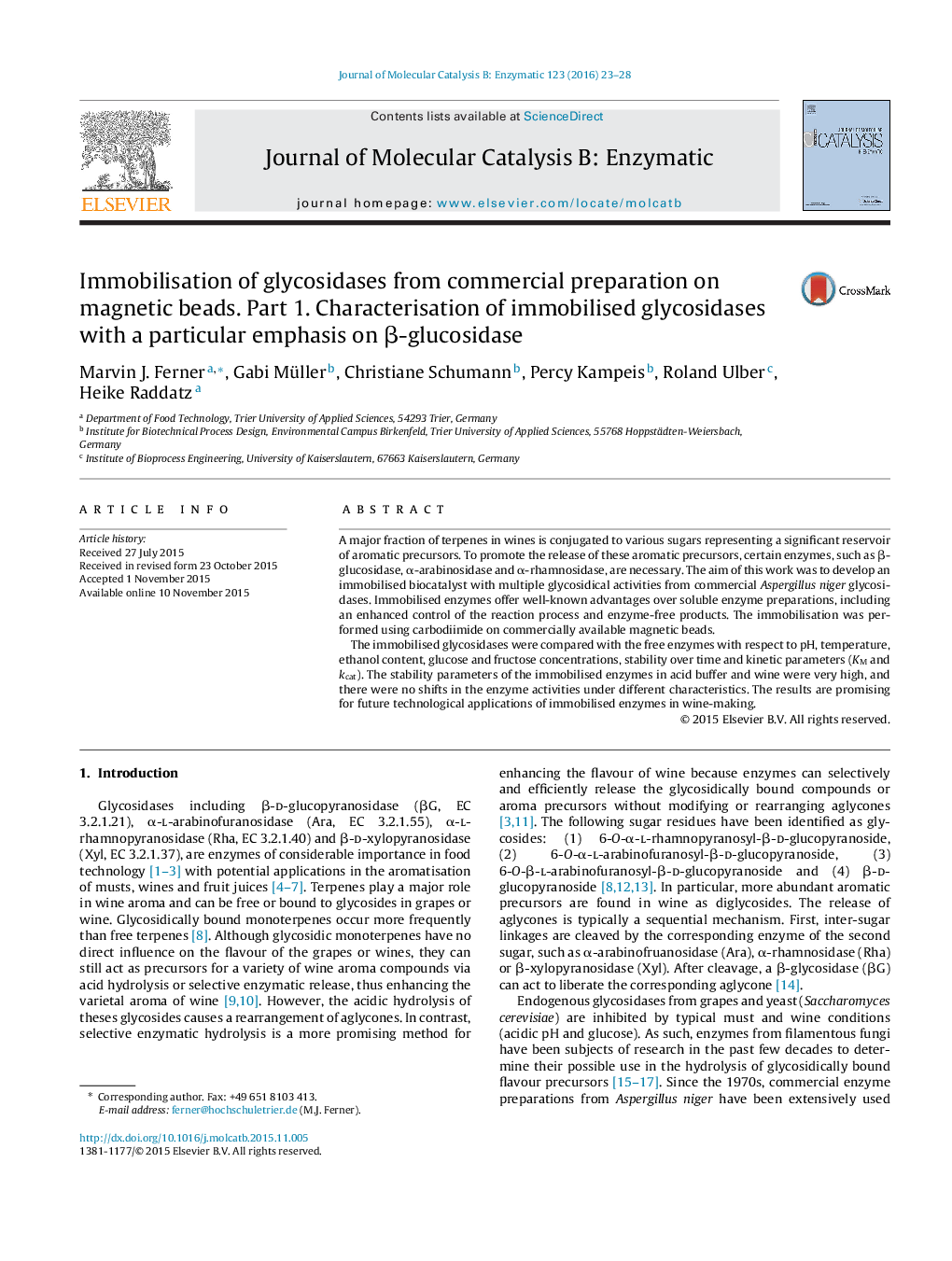| Article ID | Journal | Published Year | Pages | File Type |
|---|---|---|---|---|
| 69356 | Journal of Molecular Catalysis B: Enzymatic | 2016 | 6 Pages |
•The immobilised glycosidases showed good stabilities under wine conditions.•The immobilisation conditions exhibited a considerable affinity for β-glucosidase.•The immobilisation yield was high and the activity was high at acidic pH levels, which is well suited for wine-making applications.•The immobilised β-glucosidase showed no significant changes in the tested properties compared to the free enzyme.•The biocatalysts showed higher relative activities at increased fructose concentrations.
A major fraction of terpenes in wines is conjugated to various sugars representing a significant reservoir of aromatic precursors. To promote the release of these aromatic precursors, certain enzymes, such as β-glucosidase, α-arabinosidase and α-rhamnosidase, are necessary. The aim of this work was to develop an immobilised biocatalyst with multiple glycosidical activities from commercial Aspergillus niger glycosidases. Immobilised enzymes offer well-known advantages over soluble enzyme preparations, including an enhanced control of the reaction process and enzyme-free products. The immobilisation was performed using carbodiimide on commercially available magnetic beads.The immobilised glycosidases were compared with the free enzymes with respect to pH, temperature, ethanol content, glucose and fructose concentrations, stability over time and kinetic parameters (KM and kcat). The stability parameters of the immobilised enzymes in acid buffer and wine were very high, and there were no shifts in the enzyme activities under different characteristics. The results are promising for future technological applications of immobilised enzymes in wine-making.
Graphical abstractFigure optionsDownload full-size imageDownload as PowerPoint slide
